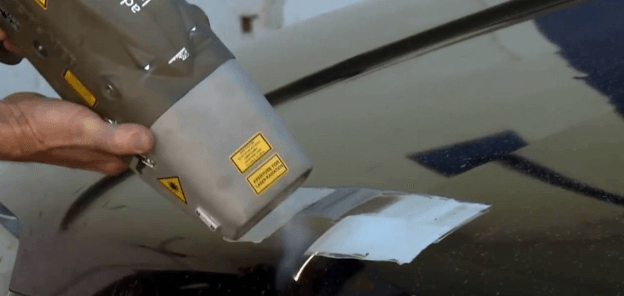
A laser cleaner is a new generation of high-tech products that are used for surface treatment. The machine uses laser ablation in the cleaning process. Laser ablation is a process that occurs when a layer of material that is deposited on a surface is removed using a laser beam. Note, laser cleaners allow for the selective removal of particular substances with close to no impact on the substrate. Laser cleaners also take advantage of an element known as the ablation threshold. The ablation threshold refers to the amount of laser density that it would take to disintegrate a contaminant. Different materials have varying thresholds. The trick is always to make sure the energy that is transferred from the laser is above the ablation threshold of the material. In this post, we look at applications of laser cleaners.
What do laser cleaners do?
Laser cleaners can be used to wipe off a wide range of contaminants on different surfaces. Some of the main applications of the laser cleaner include;
- Rust removal
The most common application of laser cleaners is laser rust removal. In laser rust removal, a high-intensity laser is shone categorically on the rust. When the laser hits the contaminant, it breaks the molecular bonds on the rust. After that, the broken bits of the layers are then ejected from the substrate. In simpler terms, the laser evaporates the rust from the surface, leaving it as good as new.
Note, this process is mostly conducted on steel surfaces. Once the substrate is ejected, the laser does not cause any more impact on the surface. The reason is that the steel surface has very high reflectivity. Therefore, once the rust is off, the light bounces off the surface, causing no damage to the surface. In laser rust removal, the rust is converted into plasma. The process is highly applied in the refurbishing of expensive materials like cars.
- Paint Removal
Laser cleaners can also be used in the removal of paint from surfaces. The laser hits the paint surface with high intensity and disintegrates the paint in a process called laser paint removal, de-coating, or laser coat removal. For the process to be successful, the energy density of the laser has to be higher than the ablation threshold while at the same time lower than the threshold of the surface. It is a widespread process because it removes the coat without causing any damage to the surface. Laser paint removal is also cheaper and very fast compared to other forms of paint removal.
- Oxide and dust removal
Laser cleaners can also be used to clean oxides and dust materials from the surface of metals. The process works like paint and rust removal. However, the amount of laser energy depends on the material and its ablation threshold, hence the use of different laser energies.
Conclusion
Laser cleaners are handheld machines that do not require any setup before usage. They are, therefore, a cheaper and most efficient way of removing impurities from surfaces. The tools are also quite easy to use, and they are fast in their functioning—laser cleaners commonly used in factories that refurbish metal surfaces of cars, car parts, and other materials.





